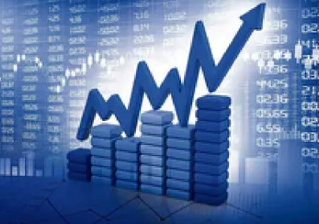Southern States Lead in GDP Contribution
A recent report by the Economic Advisory Council to the Prime Minister (EAC-PM) has highlighted large differences in how different Indian states are doing economically. The report shows that some states, especially in the south, are growing quickly, while others, like West Bengal, are seeing a decline in their economic performance.
Southern States’ Economic Growth
After economic reforms in the early 1990s, southern states such as Karnataka, Andhra Pradesh, Telangana, Kerala, and Tamil Nadu became major contributors to India’s overall economic output. In 1991, these states had below-average incomes, but by 2024, they contributed 30% of India’s GDP. Key drivers of this growth include Karnataka’s booming tech industry and Tamil Nadu’s industrial development, with Telangana also growing quickly since it became a separate state in 2014.
West Bengal’s Economic Decline
In contrast, West Bengal, which was once a leading state, has seen a major decline. In the early 1960s, the state contributed 10.5% to India’s GDP, but by now, that has dropped to 5.6%. Its per capita income (the average income per person) has also fallen significantly compared to the national average, going from 127.5% of the national average to just 83.7%. This is surprising given the state’s strong economy in the past.
Punjab vs. Haryana: A Comparison
Punjab, which benefitted from the Green Revolution (a period of agricultural advancements), has seen its economic growth slow down since 1991. Its per capita income dropped from 169% of the national average to just 106%. On the other hand, Haryana, a neighboring state, has done much better, with its income rising to 176.8% of the national average. This shows that Haryana’s economic strategies have been more successful, while Punjab is struggling to maintain its earlier success.
Maharashtra’s Contribution
Maharashtra, India’s most important economic state, still contributes the most to the country’s GDP, but its share has decreased from over 15% to 13.3%. Although its per capita income is now 150.7% of the national average, it has dropped out of the top five states in terms of income per person. This suggests the state may need to adjust its economic policies to regain its position.
Challenges for the Poorest States
The report also highlights the difficulties faced by poorer states like Uttar Pradesh and Bihar. Uttar Pradesh’s contribution to the economy has decreased from 14% in the 1960s to 9.5% today. Bihar contributes only 4.3% to the national economy and continues to fall behind, while Odisha has shown some improvement. These states’ struggles reflect the broader impact of economic reforms and state-specific policies.
The differences in how well Indian states are doing show that some have benefitted more from economic reforms than others. While southern states have made the most of these changes, states like West Bengal remain a puzzle, with their economies declining despite having certain advantages.
Month: Current Affairs - September, 2024
Category: Economy & Banking Current Affairs






